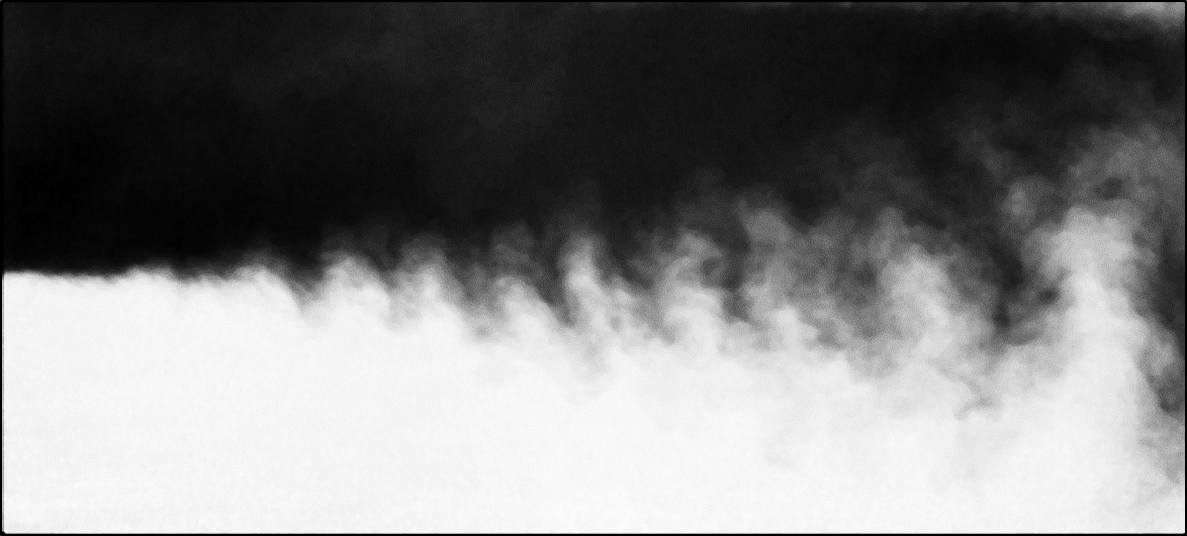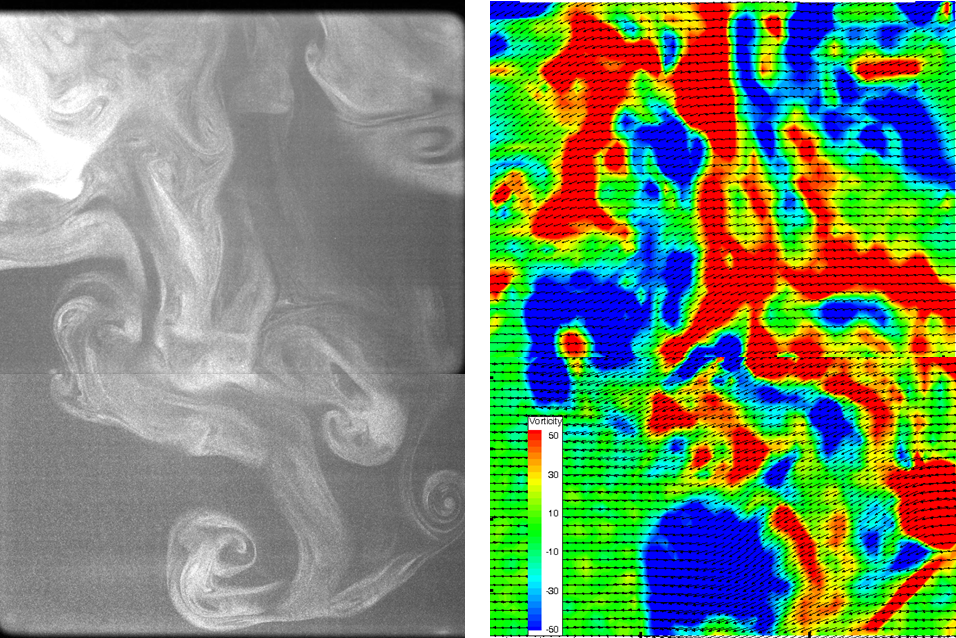Facilities ![]() Gas Tunnel
Gas Tunnel
RTI is studied in the STAML Gas Tunnel. This wind tunnel facility marks the third generation of RTI focused wind tunnel facilities at STAML.
 The system studies fluid mixing in a convective-type setup. Two fluids of different densities are injected into separate streams upstream, and are pulled downstream by an Aerovent Axivane controllable pitch fan. Meshes and honeycombs serve to dissipate the turbulent energy of the incoming fluids. The contraction section accomplishes a similar purpose, and also accelerates the fluids. The fluids remain partitioned until they enter the test section, a 10’ by 6’ acrylic box. Upon entering the test section, the fluids are free to interact, and RTI begins to occur. As the fluids continue to move across the test section their interaction time increases. This allows us to correlate downstream position to instability development time. Eventually, the mixed fluids are pulled out of the test section, through the converging conical section and are ejected out of the fan into an exhaust duct.
The system studies fluid mixing in a convective-type setup. Two fluids of different densities are injected into separate streams upstream, and are pulled downstream by an Aerovent Axivane controllable pitch fan. Meshes and honeycombs serve to dissipate the turbulent energy of the incoming fluids. The contraction section accomplishes a similar purpose, and also accelerates the fluids. The fluids remain partitioned until they enter the test section, a 10’ by 6’ acrylic box. Upon entering the test section, the fluids are free to interact, and RTI begins to occur. As the fluids continue to move across the test section their interaction time increases. This allows us to correlate downstream position to instability development time. Eventually, the mixed fluids are pulled out of the test section, through the converging conical section and are ejected out of the fan into an exhaust duct.
While classical RTI looks at interactions between two fluids in an unstable interaction, the STAML Gas Tunnel facility is designed to be able to mix three fluids of varying densities simultaneously. The velocities of incoming streams can also be accurately set using a combination of fan settings and louvers, allowing us to look at the interaction between buoyancy in the form of RTI and shear in the form of the Kelvin-Helmholtz instability.


